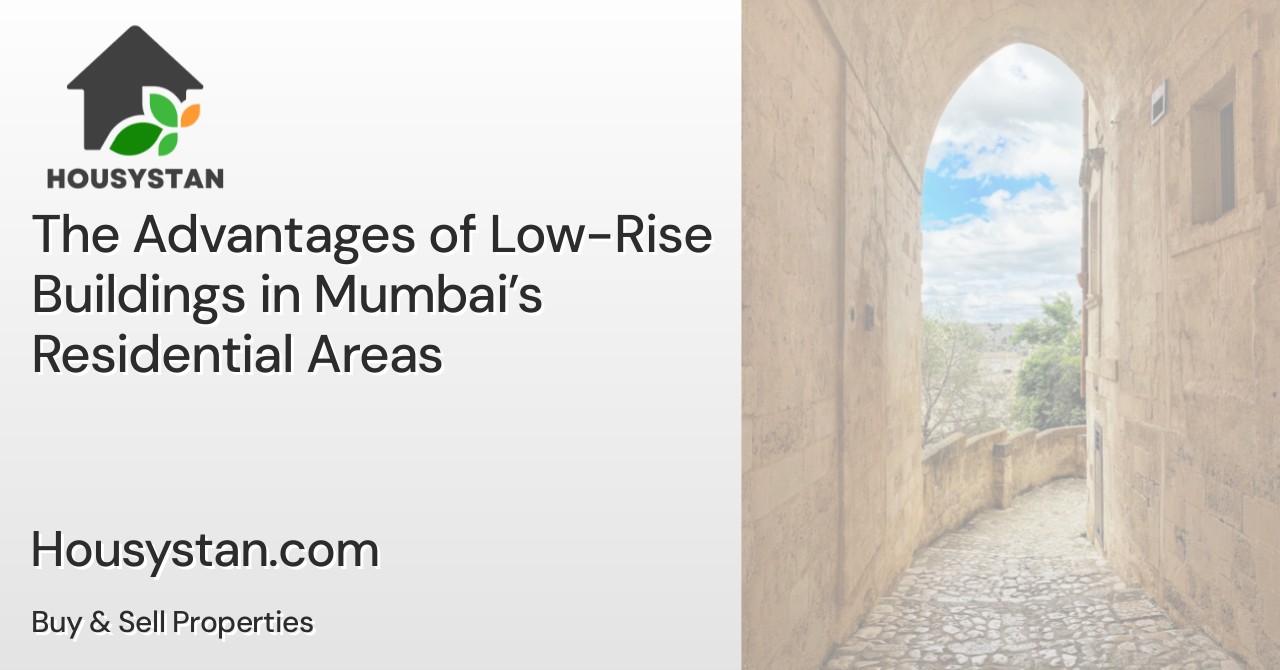The Advantages of Low-Rise Buildings in Mumbai’s Residential Areas
Read latest blogs and articles from Housystan

The Information mentioned here was last updated on:
31/12/2025Mumbai, a bustling metropolis known for its dynamic skyline, has traditionally been associated with towering skyscrapers and high-rise apartments. However, low-rise buildings are steadily gaining traction in Mumbai’s residential neighborhoods, offering a unique set of advantages that cater to the city’s evolving lifestyle preferences. For homebuyers and investors seeking a blend of comfort, convenience, and community living, low-rise developments in Mumbai’s localities present an appealing alternative to vertical living.
One of the primary benefits of low-rise buildings in Mumbai is the enhanced sense of privacy and exclusivity. Unlike high-rise complexes, these structures typically house fewer residents, reducing overcrowding and fostering a more peaceful environment. Residents enjoy quieter surroundings, minimal congestion in common areas, and a stronger sense of familiarity with neighbors, creating a close-knit community that is often missing in larger apartment towers.
Low-rise residential buildings in Mumbai also offer superior accessibility. With fewer floors, residents benefit from shorter waiting times for elevators or can conveniently use staircases, catering to families with children, seniors, and individuals with mobility needs. Additionally, these developments often provide ample green spaces, gardens, and recreational zones, allowing residents to enjoy a healthier, more active lifestyle amidst Mumbai’s urban sprawl.
- Verified Tenants/Buyers
- Unlimited Property Listing
- Zero subscription/charges fee
From an architectural perspective, low-rise constructions blend seamlessly with the character of Mumbai’s established neighborhoods such as Bandra, Juhu, and Chembur. These buildings preserve the unique charm and cultural heritage of the city, ensuring that modern living does not come at the cost of losing local identity. Enhanced ventilation, natural lighting, and reduced noise pollution further contribute to the overall well-being of occupants.
For property buyers and investors focusing on long-term value, low-rise properties in Mumbai’s residential sectors often experience stable appreciation. The limited number of units ensures exclusivity, maintaining demand and supporting property values even in fluctuating markets. Furthermore, these buildings typically have lower maintenance costs compared to high-rise counterparts, making them both a practical and economically sound choice for families, professionals, and retirees alike.
In conclusion, low-rise buildings in Mumbai’s residential areas offer a harmonious blend of privacy, accessibility, and community living. As the city continues to grow, these structures stand out as an ideal option for those seeking tranquility and a stronger sense of belonging, all while enjoying the vibrant lifestyle that Mumbai has to offer.